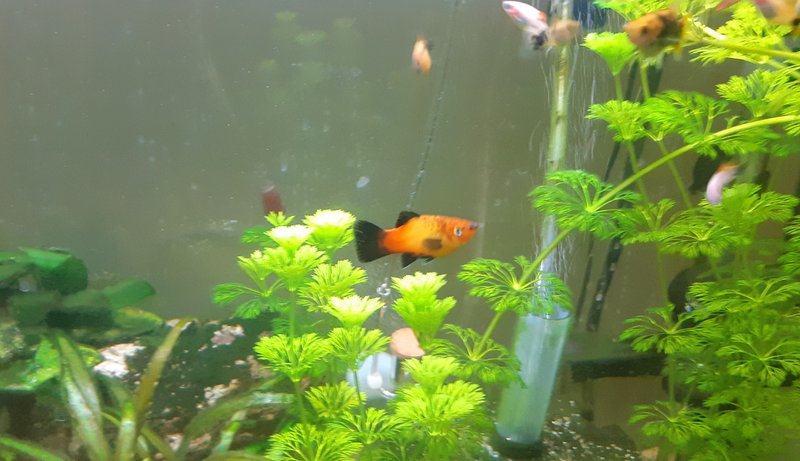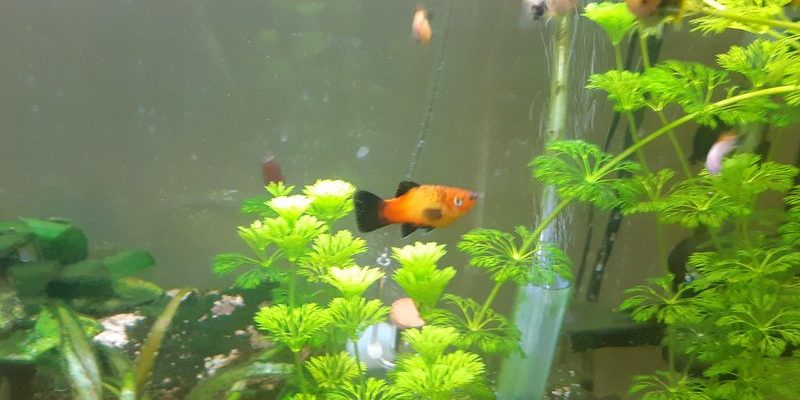
When we think about fish health, it’s easy to picture them just gliding around in their tank. However, they can face various challenges, often stemming from water quality, diet, or stress. As an aquarium enthusiast, having a basic knowledge of common health problems in platies is crucial. It’s not just about observing their behavior; it’s about stepping in when necessary to ensure they thrive.
In this article, we’ll dive into some of the most common health problems platies experience and how you can treat them effectively. Whether you’re a newbie or a seasoned aquarist, this guide will provide helpful insights to keep your platies in tip-top shape.
Signs of Stress in Platies
Stress can hit platies just like it can any living creature. Imagine being crammed into a tiny space or having sudden changes in your environment—you’d feel unsettled too. For platies, stress often manifests through behavior changes and physical symptoms.
You might notice your platies hiding more than usual or darting around the tank frantically. They could also lose their vibrant colors, which is always a red flag. Here are some signs of stress to look out for:
- Hiding frequently
- Less interest in food
- Erratic swimming patterns
- Pale or dull coloring
If you spot these signs, it’s crucial to check their environment. Are the water parameters like temperature, pH, and ammonia levels within safe ranges? Even small changes can upset your platies. Fixing these issues can often alleviate their stress and restore their lively demeanor.
Ich: The White Spot Disease
Ich, short for *Ichthyophthirius multifiliis*, is a common illness that platies can contract, especially when stressed or in subpar water conditions. It’s often called “white spot disease” because of the telltale white cysts that appear on their bodies and fins. Imagine tiny grains of salt sprinkled over their skin—that’s what it looks like.
This parasite can wreak havoc if left untreated. Affected fish may scratch against objects, showing signs of irritation. Here are some ways to identify and treat Ich:
- Observation: Look for white spots and changes in behavior.
- Heat and salt treatment: Gradually raise the water temperature to about 82-86°F (28-30°C) and add aquarium salt to the water.
- Medications: If the problem persists, consider using anti-parasitic medications available at pet stores.
Remember, it’s crucial to act quickly. Ich can spread rapidly in your tank, so isolating affected fish could be a wise step.
Fin Rot: What to Watch For
Fin rot is another common ailment that platies may experience, often triggered by poor water quality or injuries. You might notice the fins looking ragged, frayed, or discolored. It can be distressing to see your once-vibrant fish struggling with this condition.
Here’s why fin rot happens: bacteria can infect damaged fins, especially if the water quality isn’t up to snuff. To treat fin rot, consider these steps:
- Improve water conditions: Regularly test the water and perform partial water changes to keep things clean.
- Isolate the affected fish: This allows for targeted treatment without affecting the whole tank.
- Use medications: Antibiotic treatments can clear up infections. Look for products specifically labeled for fin rot.
Keeping an eye on your platies’ fins can help catch this issue early, leading to a happier, healthier fish.
Swim Bladder Disorder: A Floating Dilemma
Have you ever seen your platies floating sideways or struggling to stay underwater? This could be a sign of swim bladder disorder, a common issue in many fish. The swim bladder is an organ that helps fish control their buoyancy. When something goes awry, it can lead to swimming difficulties.
Several factors could cause swim bladder disorders, including overfeeding or eating too quickly—platies can be quite eager eaters! To help your fish recover, consider these tips:
- Adjust feeding habits: Reduce the amount of food you provide and switch to high-quality pellets that sink slowly.
- Dietary changes: Offer peeled peas to help with digestion. They can act as a natural remedy.
- Maintain water quality: Ensure your tank is clean and well-oxygenated.
By addressing these aspects, you can often help your platies find their balance again.
Recognizing Ichthyosomiasis: A Rare Condition
While not as common, ichthyosomiasis can impact your platies. This condition, also known as fish tuberculosis, can manifest as lesions or tumors on the body. This can be alarming, but knowing what to look for can help.
If you suspect your fish have ichthyosomiasis, check for the following:
- Visible lumps or sores on the body
- Loss of appetite or lethargy
- Paler than usual coloring
Treating this condition involves a combination of improving water quality and using appropriate medications. You might also want to consult your local fish vet for guidance.
Preventative Care for Healthy Platies
Preventing health problems before they start is always better than treating issues after they arise. Here’s a straightforward playbook for keeping your platies healthy:
- Regular tank maintenance: Change 10-20% of the water weekly and ensure filtration is effective.
- Monitor water parameters: Use a reliable test kit to keep an eye on ammonia, nitrite, and nitrate levels.
- Feed them right: Offer a balanced diet and avoid overfeeding; this is a common pitfall.
- Avoid tank mates that stress them: Some fish are naturally aggressive or overly active.
Implementing these preventative measures can significantly reduce the chances of encountering health issues down the road.
Caring for platies can be a rewarding experience, but it comes with the responsibility of ensuring their health and well-being. By learning about the common health problems platies face and how to treat them, you can keep your little swimmers happy and vibrant.
Always remember that catching issues early is key. Regular tank maintenance, a balanced diet, and an eye for behavior can make all the difference. In the end, a healthy platy is a happy platy, and seeing them thrive will surely bring a smile to your face. Take your time, stay informed, and enjoy the wonderful world of aquarium keeping!

